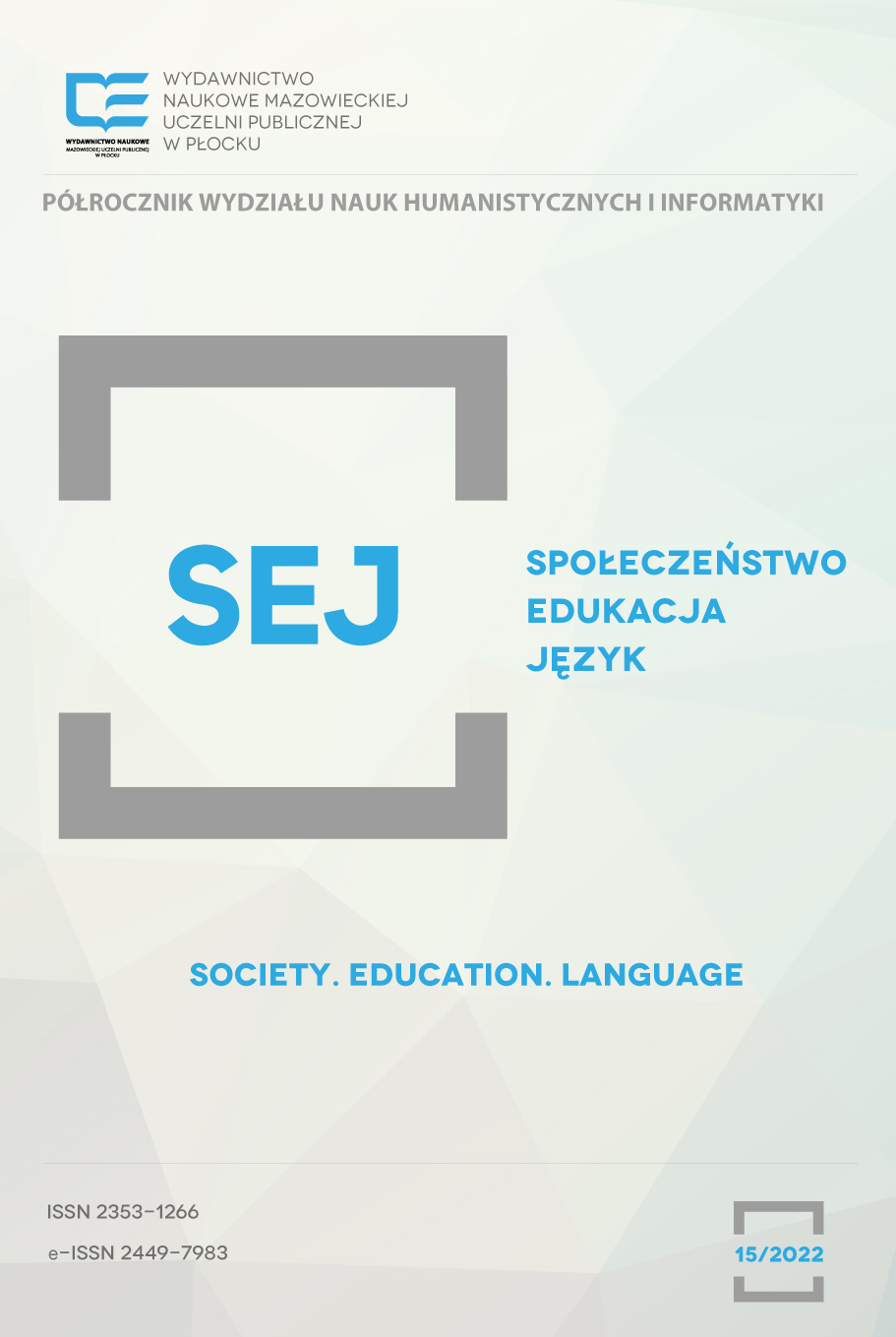DWUJĘZYCZNOŚĆ PODCZAS NAUKI ZA GRANICĄ;
NAUKA DRUGIEGO JĘZYKA W WARUNKACH NAUKI JĘZYKA DOCELOWEGO
DOI:
https://doi.org/10.19251/sej/2022.15(6)Słowa kluczowe:
dwujęzyczność, uczący się imigranci, język docelowy, dystans językowyAbstrakt
W pracy zbadano korelację między wybranymi czynnikami a poziomem znajomości języka angielskiego wśród imigrantów. W badaniu wzięło udział 50 uczniów, obierających naukę j. angielskiego w klasie ESL w Communicate School w Manchesterze w Wielkiej Brytanii. Uzyskane wyniki prowadzą do wniosków, że na znajomość języka angielskiego wśród osób urodzonych za granicą silnie wpływają zarówno zmienne indywidualne, jak i strukturalne. Zgodnie z oczekiwaniami, na znajomość języka angielskiego imigrantów pozytywnie wpłynął rozwój gospodarczy, a negatywnie dystans językowy. Dodatkowo na biegłość w języku angielskim znaczący wpływ miały również inne, indywidulnie istotne, czynniki.
Bibliografia
Blau, P. M. (1977). Inequality and Heterogeneity: A Primitive Theory of Social Structure. New York: The Free Press.
Breton, R. (1964). Institutional Completeness of Ethnic Communities and Personal Relations to Immigrants. American Journal of Sociology, 70(2), 193-205.
Census 2011. (2018). Regional ethnic diversity. Newport: Office for National Statistics.
Chiswick, B. R., & Miller P. W. (1995). The Endogeneity between Language and Earnings: International Analyses. Journal of Labor Economics, 13(2), 246-88.
Chiswick, B. R., & Miller, P. W. (2001). A Model of Destination-Language Proficiency Acquisition: Application to Male Immigrants in Canada. Demography, 38, 391-409.
Chiswick, B. R., & Miller, P. W. (2004). Linguistic Distance: A Quantitative Measure of the Distance Between English and Other Languages. IZA Discussion Papers, (1246).
Chiswick, B. R., & Miller, P. W. (2007). Modeling Immigrants’ Language Skills. IZA Discussion Papers, (2974).
Espenshade, T. J., & Fu, H. (1997). An analysis of English-language acquisition among U.S. immigrants. American Sociological Review, 62, 288-305.
Freedom House. (2018). Freedom in the World 2018. Washington, D.C., New York, NY: Population Reference Bureau.
Grenier, G. (1984). Shifts to English as usual language by Americans of Spanish mother tongue. Social Science Quarterly, 62, 537-550.
Jasso, G., & Rosenzweig, M. R. (1990). The new chosen people: Immigrants to the United States. New York: Russell Sage.
Lazear, E. P. (1999). Culture and Language. Journal of Political Economy, 107(6), 95-126.
Lindstrom, D. P., & Massey, D. S. (1994). Selective emigration, cohort quality, and models of immigrant assimilation. Social Science Research, 23, 315-349.
Loo, C. M. (1985). The ‘’biliterate’’ ballot controversy: Language acquisition and cultural shift among immigrants. International Migration Review, 19, 493-515.
Massey, D. S. et al. (1993). Theories of International Migration: A Review and Appraisal. Population and Development Review, 19, 431-466.
Simons, G. F. & Fennig Ch. D. (Eds.). (2018). Ethnologue: Languages of the World (21th ed.). Dallas, TX: SIL International.
Stevens, G. (1992). The social and demographic context of language use in the United States. American Sociological Review, 57, 171-185.
Stevens, G. (1994). The English language proficiency of immigrants in the U.S. In J. Passel & B. Edmonston (Eds.). Immigration and ethnicity: The integration of America’s newest immigrants, 63-86. Washington, DC: Urban Institute.
Stevens, G., & Schoen, R. (1988). Linguistic intermarriage in the United States. Journal of Marriage and the Family, 50, 267-279.
Stevens, G., (1999). Age at Immigration and Second Language Proficiency Among Foreign-Born Adults. Retrieved May 12, 2018, from https://www.researchgate.net/publication/ 236008619_Age_at_Immigration_and_Second_Language_Proficiency_Among_Foreign-Born_Adults
Tubergen, F. A. V., & Kalmijn, M. (2009). A dynamic approach to the determinants of immigrants’ language proficiency. Retrieved June 3, 2018, from https://www.rug.nl/research/ portal/files/14487281/2009-TubergenFv-Dynamic.pdf
World Bank. (2018). GDP (current US$). Washington DC: World Development Indicators.
